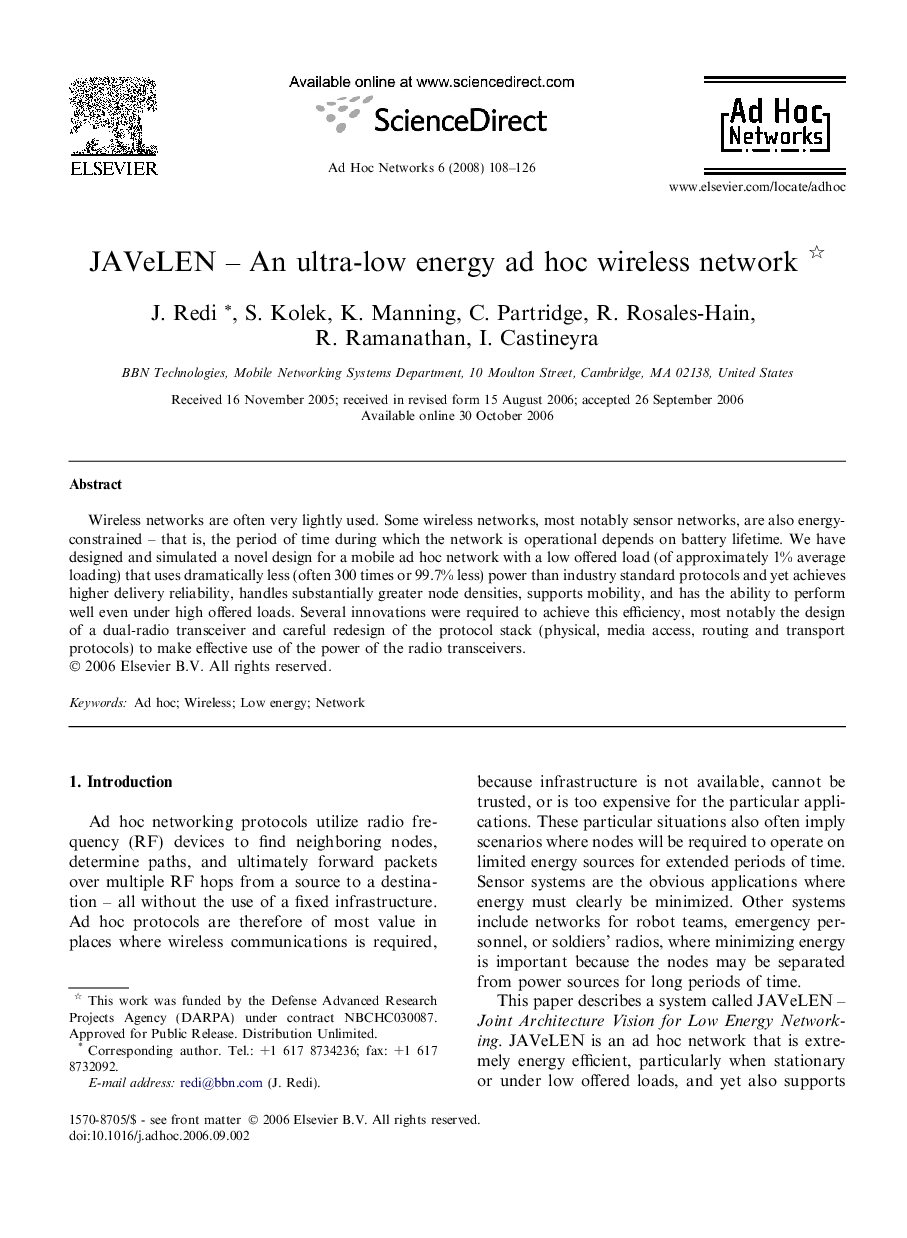| Article ID | Journal | Published Year | Pages | File Type |
|---|---|---|---|---|
| 446539 | Ad Hoc Networks | 2008 | 19 Pages |
Wireless networks are often very lightly used. Some wireless networks, most notably sensor networks, are also energy-constrained – that is, the period of time during which the network is operational depends on battery lifetime. We have designed and simulated a novel design for a mobile ad hoc network with a low offered load (of approximately 1% average loading) that uses dramatically less (often 300 times or 99.7% less) power than industry standard protocols and yet achieves higher delivery reliability, handles substantially greater node densities, supports mobility, and has the ability to perform well even under high offered loads. Several innovations were required to achieve this efficiency, most notably the design of a dual-radio transceiver and careful redesign of the protocol stack (physical, media access, routing and transport protocols) to make effective use of the power of the radio transceivers.
